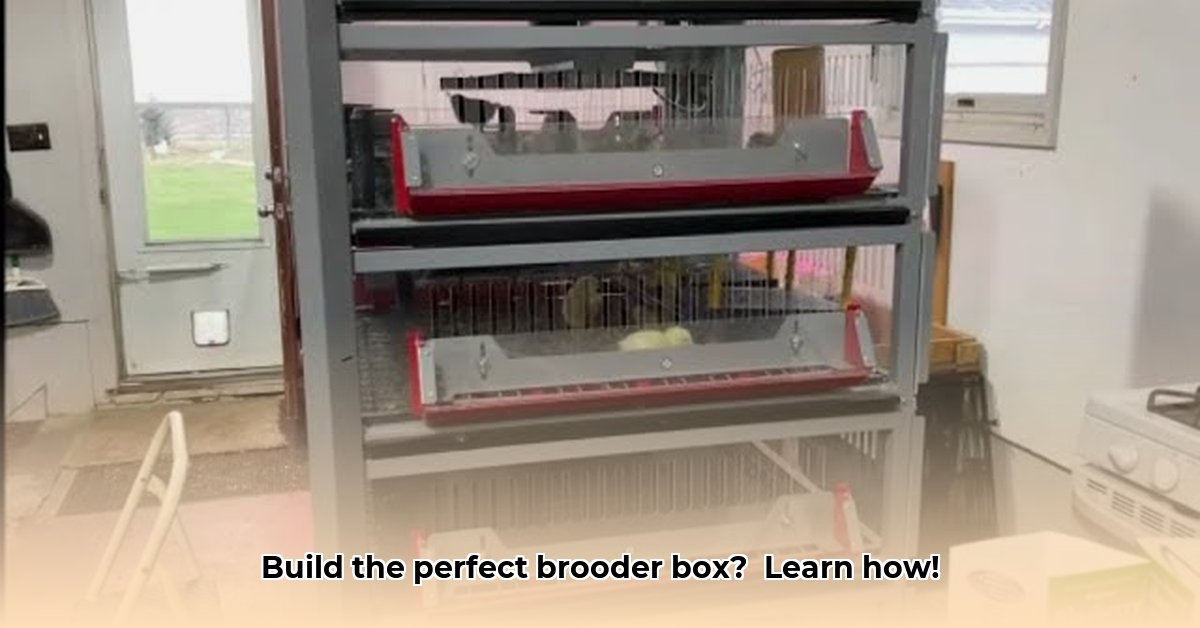
Choosing the Right Tractor Supply Brooder Box for Your Sustainable Farm
Raising chickens sustainably starts with providing a safe and comfortable environment for your chicks. A Tractor Supply brooder box is an excellent starting point, but selecting the right one is crucial. This guide will help you navigate the options and set up a thriving, eco-friendly chick habitat. Don't forget to consider energy efficiency – a key component of sustainable farming. To find local chick days, check out Tractor Supply chick days.
Factors to Consider When Choosing a Brooder Box:
Before you head to Tractor Supply, consider these key factors:
Capacity: How many chicks are you brooding? Overcrowding stresses chicks and increases disease risk. Choose a box with enough space for your flock to comfortably spread out. A larger box might seem excessive now, but offers flexibility for future broods.
Heating System: Efficient heating is vital. Tractor Supply offers various heating options. Electric heat lamps are common, but can be energy-intensive. Heated plates offer more consistent warmth but are generally more expensive. Radiant heat panels, while more of an investment, are energy-efficient and provide more even warmth. What's the best option for your budget and energy goals?
Ease of Cleaning: Sanitation is paramount for disease prevention. Select a brooder box with smooth, easy-to-clean surfaces and removable parts. The simpler the cleaning process, the better you'll be able to keep the chicks healthy and disease-free.
Materials and Durability: Plastic brooder boxes are lightweight and easy to clean, but may not be as durable as wooden ones. Wooden boxes offer better insulation but require more maintenance. Consider your budget and the box’s expected lifespan.
Setting Up Your Brooder Box: A Step-by-Step Guide
Once you've chosen your brooder box, here’s a simple, step-by-step guide to setting up your chicks’ cozy home:
Location, Location, Location: Choose a draft-free, quiet area with relatively stable temperatures. Avoid areas prone to temperature fluctuations, direct sunlight, or loud noises. Consider the overall security of the area as well.
Assembly and Cleaning: If needed, assemble the box according to manufacturer instructions. Then, thoroughly clean the brooder box with a mild disinfectant suitable for poultry. This prevents the introduction of harmful bacteria from the start.
Installing the Heating System: Securely attach your chosen heat source, ensuring it's placed safely and at the recommended distance from the bedding. Never leave heat lamps unattended, especially if using traditional incandescent bulbs. Regularly monitor the temperature using a reliable thermometer. Aim for a temperature of around 95°F (35°C) for newly hatched chicks, gradually lowering it as they grow.
Choosing the Right Bedding: Use a safe, absorbent bedding material like pine shavings (avoid cedar or redwood due to harmful oils). Recycled paper bedding is a sustainable alternative. Ensure the bedding is deep enough for the chicks to snuggle into, but not so deep they can get lost. Replace soiled bedding daily to maintain hygiene and prevent ammonia buildup.
Adding Feeders and Waterers: Use chick-sized feeders and waterers to prevent drowning. Clean these daily to prevent the spread of disease.
Maintaining a Thriving Brooding Environment
Maintaining a healthy environment is key to raising healthy chicks. This section outlines crucial elements:
Temperature Regulation: Use a thermometer to monitor temperatures. Aim for 95°F (35°C) for the first week, reducing by 5 degrees weekly until reaching room temperature. Consistent temperature is paramount.
Humidity Control: Moderate humidity is crucial for preventing respiratory issues. Excessive humidity can lead to bacterial or fungal growth.
Health Monitoring: Daily observation is essential. Look for signs of illness, such as lethargy, ruffled feathers, or unusual droppings. Isolate sick chicks immediately. Consult a veterinarian if necessary.
Cleaning and Sanitation: Remove soiled bedding and clean the brooder weekly with a suitable disinfectant. Consistent cleaning is significantly important to preventing disease outbreaks.
Sustainable Brooding Practices: Minimizing Your Environmental Footprint
Sustainable poultry farming is more than just raising healthy chicks; it's about minimizing your environmental impact. These tips can help:
Sourcing Chicks Ethically: Buy chicks from local, reputable hatcheries or breeders who prioritize humane treatment and sustainable practices.
Locally Sourced Bedding: Use locally sourced or recycled bedding materials to reduce transportation emissions.
Composting Manure: Chick manure is a rich fertilizer. Composting it reduces waste and provides valuable nutrients for your garden.
Natural Pest Control: Explore natural pest control methods to avoid harmful chemicals. This reduces pesticide contamination and protects beneficial insects and the surrounding environment.
Troubleshooting Common Brooding Problems
- Overheating: If chicks are panting or away from the heat source, lower the temperature, increase ventilation, or reposition the heat source.
- Chilling: If chicks huddle together, increase the temperature, add more bedding, or reduce drafts.
- Disease Outbreaks: Improve sanitation, isolate sick chicks, and consult a veterinarian immediately. Early intervention is crucial for disease control.
- Pecking Order Issues: Monitor for bullying. Provide supplemental food for weaker chicks or separate aggressive individuals to prevent injuries.
Key Takeaways:
- Choosing the right brooder box is crucial for raising healthy, happy chicks. Consider factors like capacity, heating, ease of cleaning, and durability.
- Maintaining a consistent temperature, humidity, and hygiene is essential for preventing disease. Regular cleaning and monitoring are paramount.
- Incorporate sustainable practices to minimize your environmental footprint. Ethical sourcing, composting, and natural pest control are all important steps.
By following this guide and prioritizing sustainable practices, you'll be well on your way to raising a healthy, thriving flock of chickens. Happy brooding!